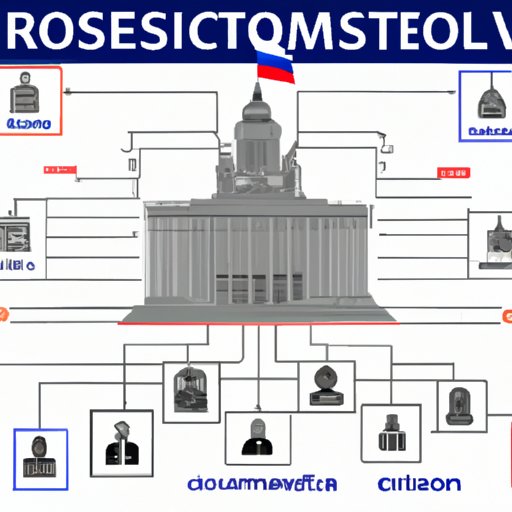Introduction
The Russian government is the governing body of the Russian Federation, a federal semi-presidential republic. Its structure is based on the 1993 Constitution of Russia, which defines a framework of separation of powers between the legislative, executive, and judicial branches. This article will explore the various components of the Russian government, including its structure, the role of political parties, and recent changes to the constitution.

An Overview of the Russian Government Structure
The Russian government is composed of three branches: the legislative, executive, and judicial. The legislature, or Federal Assembly, is made up of two houses: the State Duma (lower house) and the Federation Council (upper house). The executive branch is headed by the President, who is elected for a six-year term. The President has the power to appoint cabinet ministers, sign laws, and veto legislation. The judiciary consists of the Supreme Court, Constitutional Court, and regional courts.
Exploring the Powers and Responsibilities of Russia’s Legislative, Executive, and Judicial Branches
Legislative Branch: The State Duma is the lower house of the Federal Assembly and is responsible for making laws. It is composed of 450 members, who are elected by direct popular vote for five-year terms. The Federation Council is the upper house and consists of two representatives from each of Russia’s 85 federal regions. The Council has the power to approve or reject presidential appointments and international treaties.
Executive Branch: The President is the head of state and commander-in-chief of the armed forces. He has the power to appoint cabinet ministers, sign laws, and veto legislation. He also has the power to dissolve the Federal Assembly and call for new elections if necessary. The Prime Minister is appointed by the President and is responsible for overseeing the day-to-day operations of the government.
Judicial Branch: The Supreme Court is the highest court in the country and is responsible for hearing cases involving constitutional law. The Constitutional Court is responsible for interpreting the constitution and resolving any disputes between the federal and regional governments. Finally, there are regional courts that hear cases involving civil, criminal, and administrative matters.
Examining How Russia’s Political Parties Influence the Government
Political parties play an important role in the Russian government. There are several major parties, including United Russia, the Communist Party, the Liberal Democratic Party, A Just Russia, and Yabloko. These parties have different ideologies and platforms, and they often compete for power in the legislature.
Party politics can have a significant impact on government policy. United Russia, for example, is the ruling party and has a majority in the State Duma. This means that it has the power to pass laws without needing support from other parties. Other parties may be able to influence policy if they can form coalitions with United Russia.
Analyzing Recent Changes to Russia’s Constitution
In 2020, Russian President Vladimir Putin proposed a series of amendments to the 1993 Constitution of Russia. The amendments included a number of changes to the structure of the government, such as reducing the size of the State Duma from 450 to 400 members and introducing a new system of presidential term limits. They also included changes to the powers and responsibilities of the executive, legislative, and judicial branches.
The amendments have had a significant impact on the structure of the government. For example, the reduction in the size of the State Duma has made it easier for United Russia to maintain its majority, while the new presidential term limits have allowed Putin to remain in power longer than would otherwise be possible.
Investigating the Role of Local Government in Russia
In addition to the federal government, Russia also has regional and local governments. Regional governments are responsible for implementing national policies at the regional level and providing services to their constituents. Local governments are responsible for providing services at the municipal level, such as education, health care, and public transportation.
The relationship between central and local governments is complex. On one hand, the central government has the power to override decisions made by local governments. On the other hand, local governments have some autonomy in setting their own policies and priorities.
Conclusion
This article has examined how the Russian government works. It has provided an overview of the structure of the government, the role of political parties, and recent changes to the constitution. It has also explored the role of local governments in Russia and the relationship between central and local governments. Overall, this article has provided an overview of the workings of the Russian government and the implications of recent changes for its structure.
Further research could explore the impact of these changes on the Russian economy and society. Additionally, research could examine how the current political and economic environment affects the functioning of the government and the ability of citizens to participate in the political process.
(Note: Is this article not meeting your expectations? Do you have knowledge or insights to share? Unlock new opportunities and expand your reach by joining our authors team. Click Registration to join us and share your expertise with our readers.)
